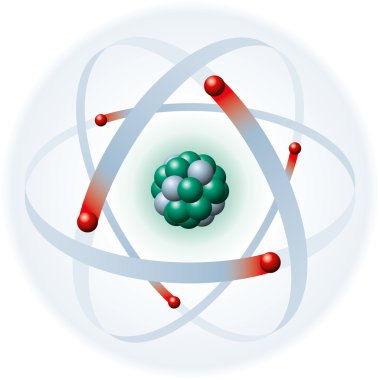
Illustration of an atom with blue electron shell, red electrons, green protons and gray neutrons on white background. The electrons produce the atomic shell. Neutrons and protons produce the atomic nucleus.

Illustration of an atom with name

Illustration of physics and chemistry, Quantum leap, the discontinuous change of the state of an electron in an atom or molecule from one energy level to another

Shapes of P orbital or nodal plane

Illustration of chemistry, isotopes of carbon, Carbon isotopes come in three forms, Nuclei and Relative Abundance of carbon isotopes, three naturally occurring isotopes of carbon12, 13 and 14

Electron shells of the first ordinary elements of the periodic table. In chemistry and atomic physics, an electron shell may be thought of as an orbit followed by electrons around an atomic nucleus.

Main isotopes of Hydrogen. Protium, Deuterium (D) and Tritium (T) are the three naturally occurring isotopes of the chemical element hydrogen. They differ in number of protons and their atomic weight.

Colorful Atom Model Representing Scientific Concepts, Physics, and Chemistry Principles

Diagram representation of the element oxygen illustration

Illustration of chemistry, Atomic models, Atomic Models History Infographic Diagram including Democritus Dalton Rutherford Bohr Schrodinger atom structures
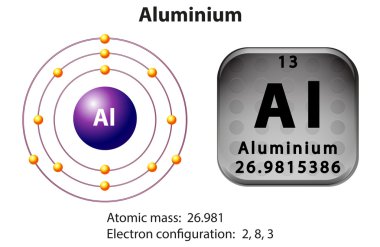
Symbol and electron diagram Aluminium illustration
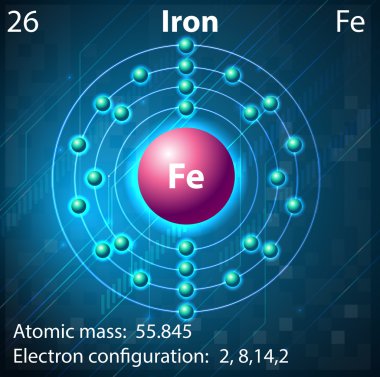
Illustration of the element Iron

Ionic bonding infographic diagram with example of Ionic bond between lithium and fluorine atoms showing ionization energy and electron affinity for chemistry science education

Electronegativity infographic diagram with example of sodium chloride showing how chlorine atom pull electron table related to bond forming due to electronegativity difference for chemistry education
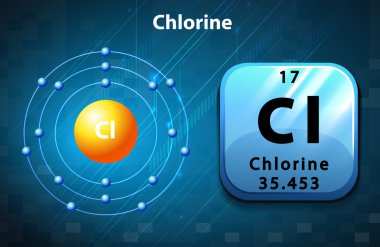
Poster of chlorine atom illustration

Illustration of the element Radon

Symbol and electron diagram for Iodine illustration
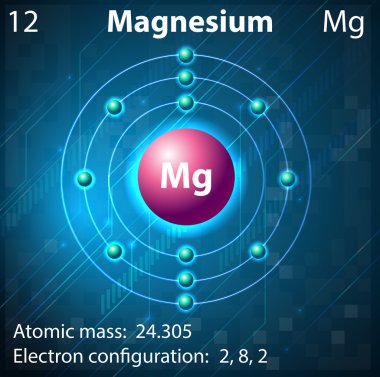
Illustration of the element Magnesium

Symbol and electron diagram Boron illustration

Illustration of the element Hydrogen

Bohr model diagram of helium He in atomic physics

Illustration of carbon atom structure

Illustration of the element Uranium
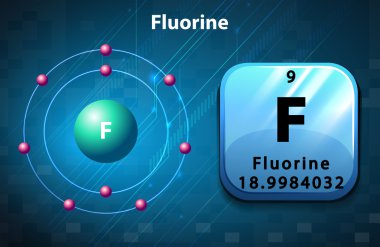
Symbol and electron diagram for Fluorine illustration

Periodic Table of element group VI Polonium

Diagram representation of the element carbon illustration

Carbon, atom model. Chemical element with symbol C and with atomic number 6. Bohr model of carbon-12, with an atomic nucleus of 6 protons and 6 neutrons, and with 6 electrons in the atomic shell.
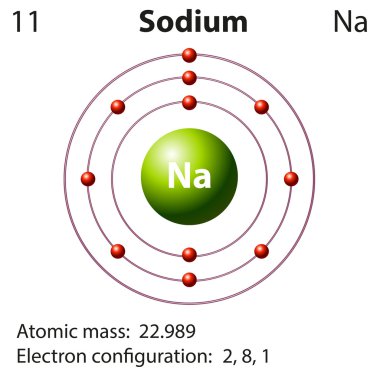
Diagram representation of the element sodium illustration

Covalent non-polar chemical bonds education vector illustration infographic
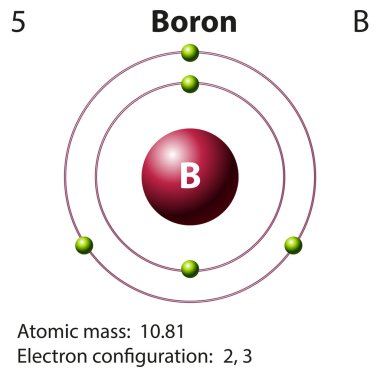
Diagram representation of the element boron illustration

Diagram representation of the element sulfur illustration

Symbol and electron diagram for Germanium illustration

Ionization the example oxygen. the process in which a neutral atom or molecule gains or loses electrons and thus acquires a negative or positive electrical charge. The charged particles in the ionosphere are created by radiation from the sun. Air io

Flashcard of selenium atom illustration

Symbol and electron diagram for Copper illustration

Potassium symbol and atom diagram potassium illustration

Illustration of the element Gold

Illustration of the element Thorium

Diagram representation of the element fluorine illustration

Symbol and electron diagram for Potassium illustration

Illustration of the element Tellurium
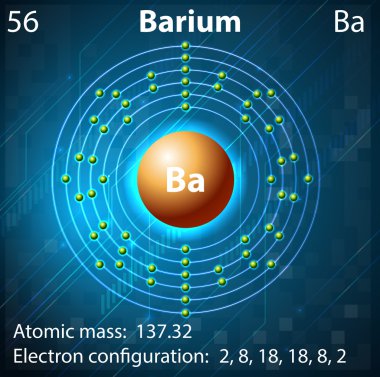
Illustration of the element Barium
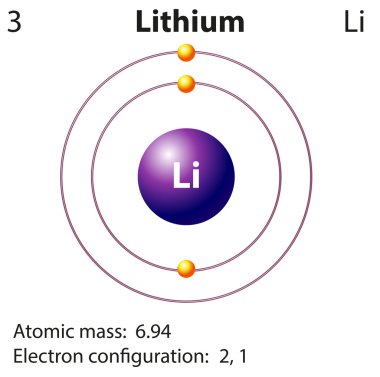
Diagram representation of the element lithium illustration

Introduction to Valence Bond Theory (VBT)

Diagram representation of the element neon illustration

Illustration of the element Chromium

Illustration of the element Nitrogen

Diagram representation of the element potassium illustration

Peoridic symbol and electron diagram of Oxygen illustration

Illuminated model of an oxygen atom on a dark background. Vector illustration

Poster of magnesium atom illustration

Periodic symbol and diagram of Radon illustration

Diagram representation of the element radium illustration

Symbol and electron diagram Thallium illustration

Symbol and electron diagram for Iodine illustration

Ionic bond vector illustration. Labeled diagram with formation explanation. Type of chemical bonding that involves electrostatic attraction between oppositely charged particles and atom interaction.
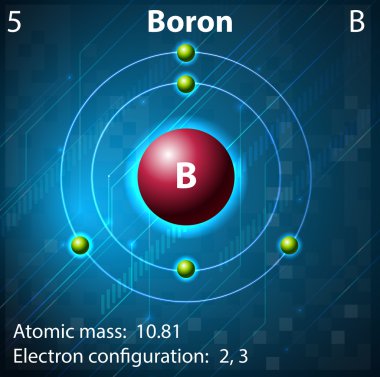
Illustration of the element Boron

Oxygen, atom model. Chemical element with symbol O and with atomic number 8. Bohr model of oxygen-16, with an atomic nucleus of 8 protons and 8 neutrons, and with 8 electrons in the atomic shell.

Diagram representation of the element cadmium illustration

Atom Cadmium. This diagram shows the electron shell configuration for the Cd atom

Symbol and electron diagram for Beryllium illustration

Lewis Dot Notation and Molecular Structure infographic diagram with examples of water ammonia methane sulfur trioxide and dinitrogen pentoxide molecules for chemistry science education

Illustration of the element Germanium

Perodic symbol and electron of Boron illustration

Atomic number and mass number of ordinary atoms, using helium as an example. The atomic number (Z) is also the number of protons (np). The Mass number (A) is the total number of neutrons and protons.

Symbol and electron diagram for Copper illustration

Illustration of the element Selenium

Symbol and electron diagram for Europium illustration

Illustration of the element Sodium

Symbol and electron diagram for Hydrogen illustration

Symbol and electron diagram of chlorine illustration

Symbol and electron diagram for Uranium illustration
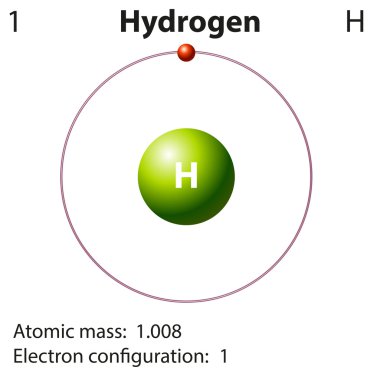
Diagram representation of the element hydrogen illustration
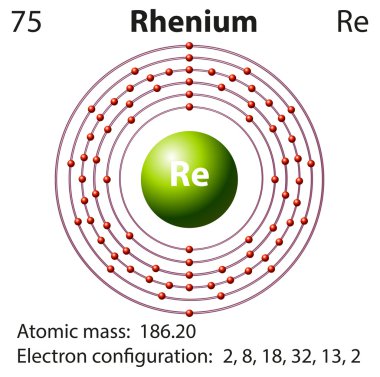
Diagram representation of the element rhenium illustration

Symbol and electron diagram for Silocon illustration

Shapes of Atomic Orbital: s orbitals radial nodes 1s, 2s and 3s

Sodium Chloride ionic bond formation. NaCl structure. Sodium and Chlorine atom chemical reaction. Electron transfer. Electrostatic attraction force. Table salt crystal lattice. Vector illustration.
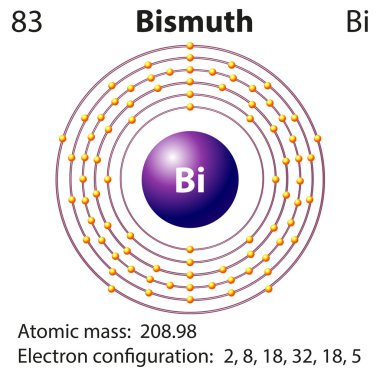
Diagram representation of the element bismuth illustration

Illustration of the element Neon

The Nature of the Covalent Bond infographic diagram showing examples of atoms in covalent bond how some of them tend to form single bond while others make double or triple for chemistry science

Diagram representation of the element polonium illustration

Periodic Table of element group VI

Illustration of the element Sulfur

Illustration of chemistry, atomic radius periodic table, Atomic radius is the distance from the atom's nucleus to the outer edge of the electron cloud, Atomic size, chemical elements

Atomic Models History Infographic Diagram including Democritus Dalton Tomson Rutherford Bohr Schrodinger atom structures for chemistry science education poster vector

Covalent bond vector illustration. Process explanation labeled diagram. Molecular bond with single and shared electrons. Carbon dioxide, chlorine and oxygen examples with structure and double pairs.

Periodic Table of element showing electron shells

The Compton Effect quantum theory vector illustration diagram

Periodic Table of element group IV

Periodic Table of element showing electron shells

Periodic Table of element group I the alkali metals

Periodic Table of element group I the alkali metals

Periodic Table of element group I the alkali metals

Bohr model of the Silver atom. electron structure of Silver

Sp3d2 Hybridization has 1s, 3p and 2d orbitals, that undergo intermixing to form 6 identical sp3d2 hybrid orbitals.

Periodic Table of element group VIII The noble gases

Periodic Table of element group VIII The noble gases

Periodic Table of element group III

Periodic Table of element group I the alkali metals

Periodic Table of element group II the alkaline earth metals